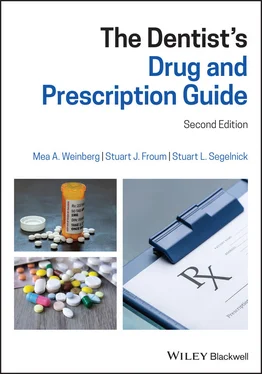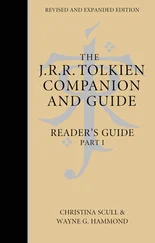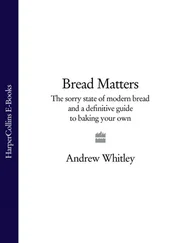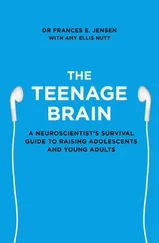1 Cover
2 List of Contributors
3 Preface
4 1 Introduction to Pharmacology1.1 Definition of Terms 1.2 Pharmacokinetics 1.3 Pharmacodynamics References
5 2 The Prescription and Drug Names2.1 Parts of a Prescription 2.2 Generic Substitution 2.3 Controlled Drugs 2.4 Principles of Prescription Writing 2.5 How to Avoid Prescription Errors References Additional Resources
6 3 Basic Prescribing and Drug Dosing for the Dental Patient3.1 Basic Principles of Drug Dosing 3.2 Pediatric Patients 3.3 Pregnant and Nursing Patients 3.4 Elderly Patients 3.5 Patients with Renal Impairment 3.6 Patients with Hepatic Impairment 3.7 Patients with History of Bariatric Surgery References Additional Resources
7 4 Dental Formularies4.1 Antimicrobials, Systemic 4.2 Antimicrobials, Local 4.3 Controlled‐Release Drug Delivery 4.4 Antivirals/Antifungal Agents 4.5 Prescribing for Acute Dental Pain 4.6 Prevention and Management of Opioid Prescription Drug Misuse 4.7 Oral Sedation 4.8 Glucocorticosteroids References Additional Resources
8 5 How to Manage Potential Drug Interactions in Dentistry5.1 Introduction to Drug Interactions 5.2 Antibiotic–Drug Interactions in Dentistry 5.3 Analgesic–Drug Interactions in Dentistry 5.4 Sympathomimetic Agents and Drug Interactions in Dentistry 5.5 Antianxiety Drug Interactions in Dentistry References
9 6 Evidence‐Based Theory for Drug Prescribing in Dentistry6.1 General Considerations 6.2 Prescribing for Inflammatory Periodontal Diseases and Periodontal Surgical Procedures 6.3 Prescribing for Dental Implant Surgery 6.4 Prescribing for Oral Surgery 6.5 Prescribing for Odontogenic Infections References
10 7 Management of Medications Taken by Medically Complex Dental Patients7.1 American Heart Association Guidelines for Antibiotic Prophylaxis 7.2 Antibiotic Prophylaxis for Total Joint Replacement 7.3 Cardiovascular Diseases (Marc A. Singer, MD) 7.4 Pregnant and Nursing Patient 7.5 Corticosteroids and Thyroid Medication 7.6 Asthma Medications 7.7 Diabetes Medication 7.8 Psychiatric and Neurological Medications 7.9 Organ Transplantation (Antirejection) Medications 7.10 Recreational and Illicit Drugs 7.11 Antiresorptive Agents 7.12 HIV/AIDS Research and Medications (Cheryl Barber, MPH, MSOD) Acknowledgments References
11 8 Herbal, Dietary, and Natural Remedies8.1 Herbal–Drug Interactions 8.2 Implications in Dentistry References
12 Appendix 1: Smoking Cessation TherapySmoking Cessation Therapy Reference
13 Appendix 2: Oral Manifestation of DrugsOral Manifestation of Drugs References
14 Appendix 3: American Heart Association Antibiotic Prophylaxis GuidelinesAmerican Heart Association Antibiotic Prophylaxis Guidelines References
15 Index
16 End User License Agreement
1 Chapter 2 Table 2.1 Controlled drugs Table 2.2 Common Latin abbreviations used in dental prescription writing
2 Chapter 3 Table 3.1 Peak blood levels of antibiotics Table 3.2 Peak levels of common analgesics Table 3.3 Calculation for correct dose to give to a pediatric patient Table 3.4 How the prescription is written Table 3.5 How to calculate dose if the child can swallow tablets Table 3.6 Calculating the dose of amoxicillin suspension in mL for a 10‐year‐... Table 3.7 Calculating the dose of amoxicillin chewable tablets in mg for a 10... Table 3.8 Calculating the dose of amoxicillin capsules in mg for a 10‐year‐ol... Table 3.9 Calculating the dose of clarithromycin (Biaxin) in mL for a 10‐year... Table 3.10 Pediatric dosage schedule Table 3.11 How the clarithromycin (Biaxin) prescription should be written Table 3.12 Calculating the dose of azithromycin oral suspension in mL for a 1... Table 3.13 Calculating the dose of azithromycin tablets in mg for a 10‐year‐o... Table 3.14 Calculating the dose of clindamycin oral solution in mL for a 10‐y... Table 3.15 Calculating the dose of clindamycin capsules in mg for a 10‐year‐o... Table 3.16 FDA pregnancy categories Table 3.17 List of dental drugs commonly used during pregnancy and nursing Table 3.18 Severity scale for renal disease Table 3.19 Drug dosages in renal and liver impairment Table 3.20 Antibiotics available in liquid formulation for adult dosing Table 3.21 Analgesics available in liquid form
3 Chapter 4Table 4.1 Patient counseling on how to take antibioticsTable 4.2 Antiviral agentsTable 4.3 Active ingredients in OTC topical anestheticsTable 4.4 Topical antifungal agent prescriptionTable 4.5 Common nonsteroidal antiinflammatory drugsTable 4.6 Opioid/nonopioid combination products for dental painTable 4.7 Patient physical status classificationTable 4.8 Assessment of the patient’s NPO statusTable 4.9 Monitoring a patient under anesthesiaTable 4.10 Common benzodiazepines used for minimal sedation/antianxietyTable 4.11 Classification of selective topical steroids used in dentistryTable 4.12 Prescriptions for various steroidsTable 4.13 Equivalent doses in milligrams of glucocorticoidsTable 4.14 Systemic glucocorticosteroids classification
4 Chapter 5Table 5.1 Rating of drug interactionsTable 5.2 Substrates (drugs) metabolized by specific isoenzymesTable 5.3 Inhibitors (drugs) of specific cytochrome P450 isoenzymes: the drug...Table 5.4 Inducers (drugs) of the CYP450 isoenzymesTable 5.5 Clinically significant antibiotic–drug/food interactions in dentist...Table 5.6 Analgesic drug–drug interactionsTable 5.7 Sympathomimetic drug–drug interactionsTable 5.8 Adverse effectsTable 5.9 Antianxiety (benzodiazepines) drug–drug interactions
5 Chapter 6Table 6.1 Antibiotics that can be prescribed for Grade C periodontitisTable 6.2 Suggested antibiotic dosages used in molar‐incisor periodonticsTable 6.3 How a prescription for methylprednisolone is writtenTable 6.4 Classification of endodontic lesions
6 Chapter 7Table 7.1 Conditions recommended for prophylactic antibioticsTable 7.2 Antibiotic prophylaxis recommendations for dental proceduresTable 7.3 Prophylactic antibiotic regimens for oral and dental proceduresTable 7.4 How the prescription is written for oral prophylactic antibiotic re...Table 7.5 How the prescription is written for oral prophylactic antibiotic re...Table 7.6 Suggested antibiotic prophylaxis regimen in dental patients with to...Table 7.7 How the prescriptions are written for oral antibiotic prophylaxis f...Table 7.8 How the prescriptions are written for oral antibiotic prophylaxis f...Table 7.9 Classification of highblood pressure (BP)Table 7.10 Dental management of patients taking drugs for hypertensionTable 7.11 Dental management of patients taking drugs for anginaTable 7.12 Dental management of patients taking medications for heart failureTable 7.13 Medications used for cardiac arrhythmiasTable 7.14 Dental guidelines for corticosteroid supplementation: preoperative...Table 7.15 Medications for short‐term and long‐term control of asthmaTable 7.16 Oral medications for diabetesTable 7.17 Dental management of patients taking neurological and psychiatric ...Table 7.18 BisphosphonatesTable 7.19 Risk category stages of ARONJ with the appropriate managementTable 7.20 Historical timeline of HIV treatmentTable 7.21 Common or severe adverse effects associated with HAARTTable 7.22 HIV vaccine efficacy trials
7 Chapter 8Table 8.1 Common herbal products taken by patients for dental problemsTable 8.2 Common herbal–drug interactions in dentistryTable 8.3 Dental‐related adverse effects of herbal products
8 Appendix 1Table A1.1 Pharmacological agents used for smoking cessation
9 Appendix 2Table A2.1 Oral manifestation of drugsTable A2.2 Common drugs that cause xerostomia
10 Appendix 3 Table A3.1Prophylactic antibiotic regimens for oral and dental procedures
1 Chapter 2 Figure 2.1 How a prescription for doxycycline is written.
Читать дальше












